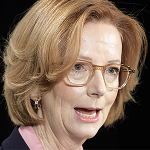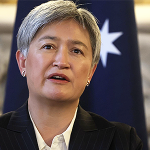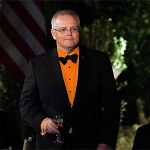In the last days of April, Canada voted to return the Liberal Party to power despite the Liberal Party’s obvious illiberalism (as demonstrated by Trudeau’s crackdown on anti-Covid-lockdown protests). Indeed, Trudeau’s actions did not resemble anything ‘liberal’ at all, but rather were much more akin to what one would expect from Fidel Castro… Of course, Trudeau’s actions meant that the Liberals needed a new candidate for Prime Minister, and the Liberals decided on Mark Carney, who was Trudeau’s economic advisor. On the campaign trail, Carney accused his primary challenger (the Conservative’s Pierre Poilievre) of trying to run not against him, but against Justin Trudeau. This criticism is rather hypocritical, given how Carney did his best to frame Poilievre as a Trumpian figure. But Carney’s strategy worked, and diverted both nationalist and anti-Trump sentiment towards the Liberals (again in a somewhat hypocritical manner, since one of the things that makes Trump so despised is Trump’s nationalism, but the left are totally okay with nationalism so long as that nationalism serves their ends). Indeed, the backlash against Poilievre was sufficient to cost him his own seat in Parliament.
Australia then held its own Federal election in the early days of May. During the campaign, the Greens Party (who are in an unofficial coalition with the establishment-left-wing Labor Party) consistently accused the centre-right Liberal-National Coalition of wanting to bring ‘Trump-style’ policies or politics to Australia. Despite Australia already having two populist-right parties already (Pauline Hanson’s One Nation and Clive Palmer’s Trumpet of Patriots), the Greens wanted to place the mantle of Trumpism on the Liberal-National Coalition. The strategy worked, the Coalition’s leader lost his own electorate (just like what happened in Canada), and the Liberal-National Coalition’s failure has already been, in part, blamed on an ‘anti-Trump Bump’.
The fact this strategy worked in both countries is quite interesting, since Trump was not on the ballot in either Canada or Australia, and the politics of both the Canadian Conservative Party and the Australian Liberal and National Parties are quite different from those of the USA’s Republican Party. Indeed, the political cultures of Australia and Canada exhibit substantial differences from that of the USA, due to lacking the Revolutionary inheritance of the latter, as well as being more secular. So why did this strategy work?
Part of the answer is obvious – both Australia and Canada are heavily reliant on the USA, both as a trade partner and a national security partner. Trump is, with some justification, seen as a threat on both counts (although Trump’s trolling about annexing Canada is clearly trolling, and not to be taken seriously). But this explanation is not sufficient – after all, Trump was not on the ballot, and just because a party is positioned on the political right does not mean it will be subservient to foreign governments who are also described as ‘on the right’. After all, one of the (alleged) characteristics of the ‘right wing’ is to privilege domestic interests above foreign interests, and to prefer the national over the international. In addition, what is ‘right’ and what is ‘left’ often changes by jurisdiction, so there’s little reason to believe that ‘right wing’ parties from different nations are collaborating with each other.
For the other part of the answer, I would suggest that we need to look into the structure of Australian and Canadian national identity, and in particular how these identities are based in part on differentiating themselves from America/the Americans/American-ness.
Group identities, including national identities, have always had this feature to some degree – the purpose of the group identity is to demarcate the boundaries of the ingroup from the outgroup, to define us against them. Human cognition has always been driven by a process of compare-and-contrast, and notions of collective identity are just like any other abstract concept in this regard. But in Canada, the ‘we’re not the USA’ factor is an atypically strong aspect of their identity, not just due to their shared border with the USA and aversion to (and experiences of) being mistaken for the USA (or Americans), but because Canadians tend to believe there is something special and even superior about their nation and society. Typically, this expresses itself politically, with a smugness about ‘we at least pay for our citizens’ health care’ and ‘we’re not like those barbaric, gun-toting cowboys’ (this is no different to the continental European anti-American smugness that I criticised in my review of Vampire Therapist). There’s also a strong argument to be made that there’s a big streak of resentment in Canada towards their more famous, more prosperous and more powerful neighbour to the south, simply because that neighbour is more famous, prosperous and powerful. A sense of moral superiority for being a ‘more humane society’ provides the psychological compensation for those inferiorities.
In the case of Australia, the need to differentiate ourselves from the USA is somewhat less acute. This is partially because we have a very different and very recognisable accent (whereas Canadians, despite having their own various accents, are sometimes mistaken for Americans), and also because we’re separated from the USA via the Pacific Ocean. But the same smug-social-democrat Amerigophobia that is rife in both Canada and continental Europe is also present in Australia, particularly (but not exclusively) on our political left. The underlying dynamic is the same as it is in Canada (and often involves the same political talking points about healthcare and firearms ownership), albeit at a lower intensity.
Ergo, in both nations, despite Trump not being on the ballot, the compulsion to ‘resist Trump’ by voting for the left influenced our domestic politics. After all, many Canadians and Australians will quite stridently say they Do Not Want To Be Like America.
Why should you believe my theory? I propose that it may also help explain the results of the UK’s recent set of local government elections, which were held right between the Canadian and Australian federal elections. In these local government elections, Reform UK (the most right wing populist party, and one whose leader is quite literally a friend of Donald Trump) gained 677 council seats, mostly from the Conservative Party (which lost 676 seats). The left-leaning Labour Party lost 186 seats, and 20 independents were removed from office too – this was offset by gains for the Liberal Democrats (which gained 163 seats) and the Greens (which gained 45 seats). In other words, despite the UK also being a trade and defence partner of the USA, and despite disgust towards Donald Trump being widespread within the UK, the most Trumpian party experienced quite stunning success and there was no overall ‘drift leftwards’ as we saw in Canada and Australia. If it is true that these leftward drifts were the product of nationalist reactions against Trump, the fact that the UK’s national identity is not as reactionarily-defined against the USA (relative to the national identities of Canada and Australia) meant that voters in the UK did not feel so compelled to assert a rejection of Trump at these local government elections. Consequently, Reform UK performed very strongly.
Yes, there is still anti-American sentiment in the UK. Don’t even get a Brit started on the virtues of the NHS and how that makes them so superior to the Americans (I’ll leave a discussion of the NHS’s chronic mismanagement, budget blowouts and poor quality service delivery for later). There’s also lingering resentment from the days of the second world war when the Americans were ‘overpaid, oversexed and over here’. But the UK’s national identity predates the very existence of the United States, and thus they feel noticeably less need to vote in a way that performatively #resists.
I offer this theory for discussion.








